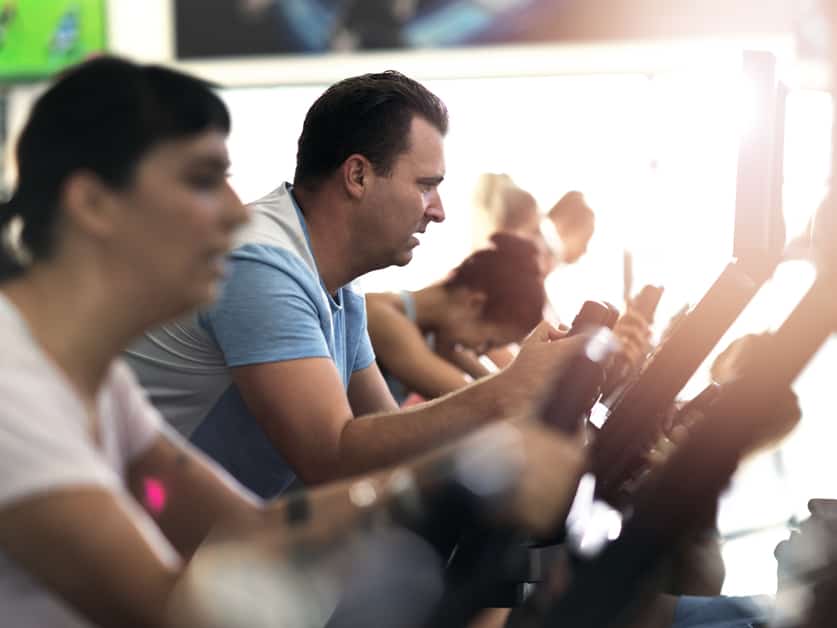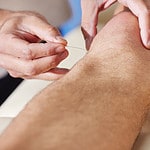Introduction
Exercising with knee osteoarthritis can be tough. But it’s the best way to rebuild joint strength and structure. Low impact activities that don’t put too much strain on the joints are joint-friendly exercises for people with knee osteoarthritis. Examples include walking, swimming, biking and tai chi.
It’s essential to listen to your doctor’s advice and choose activities that fit your needs.
Before any activity, warm up your muscles. This increases blood flow and oxygen to the muscles and lowers stiffness in the muscles and joints. It makes it easier for your muscles to contract and relax as you move.
Remember to take it easy. People with knee osteoarthritis should do moderate intensity activities that increase joint flexibility without causing pain or discomfort.
Benefits of Exercise for Knee Osteoarthritis
Exercise is great for people with knee osteoarthritis! It decreases pain, increases range of motion, and decreases inflammation. It also helps the joint bear weight better. Invest in a joint-friendly activity plan to manage your osteoarthritis symptoms.
Here are some ways exercise is beneficial:
- Reduces pain
- Improves range of motion
- Reduces inflammation
- Improves joint’s weight-bearing ability.
Increase Strength
Strength training is a key part of successful knee osteoarthritis rehabilitation. Research shows that when combined with aerobic exercise and stretching, it can improve physical function and reduce pain.
The best way to increase strength in the affected knee is to do exercises targeting its supporting muscles, like squats, lunges, leg presses, hamstring curls, and calf raises. Also, increasing core muscles like abdominals, obliques, and lower back, can help take pressure off the joint.
When doing strength exercises for knee osteoarthritis, it’s important to keep proper form. Avoid lifting too much weight too quickly. Start slowly with light weights or resistance bands for the best results.
Before starting a new exercise program, talk to your doctor if you have any worries about safety, or if you experience worsening pain during or after an exercise session.
Improve Mobility
Active lifestyle? Yes please! Maintain joint stability and increase your range of motion with a simple stretching routine. To reduce knee stiffness, try leg raises and yoga poses. Low-impact aerobic exercises, like walking, can help increase mobility and protect the joint. Strengthening exercises that target the muscles which support the knee are great for reducing discomfort, preventing injuries, and improving joint stability.
Use resistance bands or light weight lifting to strengthen quadriceps and glutes for better joint mobility. Start slowly and avoid exercises that cause unbearable pain or joint swelling. Hydrate before, during, and after exercise for best results.
Reduce Pain
Exercise is a great way to lessen knee osteoarthritis (OA) pain. Doing regular aerobics and exercises that target muscles close to the joint can reduce stiffness and pain. Aerobics increases cardiovascular endurance, while strength exercises help cut down joint-force transmission, impact shock, and also improve motion range. Plus, these exercises spark chemicals in the brain like endorphins, which have a numbing effect on pain.
Examples of useful exercises for knee OA include:
- Low-impact activities such as swimming, biking or walking.
- Resistance training with theraband exercises.
- Growing the hamstrings and quadriceps muscles.
- Balance and stability training with Tai Chi or yoga.
- Range-of-motion stretching.
If uncertain, talking to a physical therapist or exercise specialist is a great starting point. As muscle strength improves, function increases which boosts life quality.
Types of Exercise for Knee Osteoarthritis
People with knee osteoarthritis can gain from exercising. It’s vital to select joint-friendly activities. Exercising may aid in bettering knee joint health, suppleness, and muscle strength.
This article will look at the best kinds of exercise for people with knee osteoarthritis:
Low-Impact Aerobic Exercise
Low-impact aerobic exercises are great for health. They strengthen muscles around the knee joint, increase flexibility, and build endurance. Examples include walking, hiking, swimming, and water aerobics.
Patients with knee osteoarthritis should do 30+ minutes of these exercises at least two or three times a week. If a movement causes discomfort or pain in the knee joint, don’t do it. Before starting, check with your healthcare provider.
Strength Training
Strength training exercises, also known as resistance training, help build muscles around joints. This helps stabilize the knee joint, and reduces force when walking or running. It’s important to strengthen quads and hamstrings on the front and back of the thigh, as they are connected to the knee joint.
A fitness instructor or physical therapist may recommend specific exercises, depending on the person. Here are some examples:
- Squats: Stand with feet shoulder width apart, feet pointing outwards. Rock forward onto toes, with weight in heels. Squat to a comfortable depth (optional: hold railing). Rise up, pushing through heels. Repeat 10-15 times.
- Lunges: Step forward with one leg, while keeping head up, chest out, and back straight. Lower onto bent front leg, raising back foot off floor. Push off front bent leg back into standing, and switch legs. Repeat 10-15 times.
- Wall sits: Lean against wall, feet shoulder width apart, about 2 feet away. Slide down wall into sitting position, then up into leaning position. Switch sides on wall (optional: hold railing). Repeat 10-15 times.
Flexibility and Stretching
Flexibility and stretching exercises can increase the range of motion in your knee, thus improving comfort. Types of stretches include:
- Static Stretching: Extend the joint or muscle being stretched and hold it. Don’t overextend or force yourself.
- Dynamic stretching: Combine movements like arm circles, lunges and ankle circles. Focus on control over speed/repetition. Don’t bounce or move quickly.
- Passive stretching: Done with the help of a partner or therapist. Place limb at desired point of stretch and help hold it there. Listen to your body and back off if you feel pain or discomfort.
Safety Tips for Exercise with Knee Osteoarthritis
Exercising with knee osteoarthritis? Keep safety top of mind! Follow these tips for an effective and joint-friendly workout.
- Listen to your body. Don’t push yourself too hard.
- Start slow, and gradually increase intensity.
- Warm up before every exercise session.
- Take breaks in between sets.
- Strengthen the muscles around your joints.
- Use proper form to reduce stress on your joints.
- Cool down after each session.
Warm-up and Cool-down
When working out with knee osteoarthritis, it’s important to start and end your session with a warm-up and cool-down. Warming up helps the muscles move and prevents injury. A good warm-up could include light walking, stretching, or arm circles.
Cooling down helps the body return to the pre-exercise state. This gets rid of fatigue and soreness the next day. A cool-down should include light exercise like walking or jogging, plus stretches for the lower limbs. Hold each stretch for at least 15 seconds.
These warm-ups and cool-downs improve flexibility and range of motion, reducing pain associated with osteoarthritis, especially around the knee joint. When starting a new activity or exercise, always begin slowly and increase intensity as you feel comfortable. This helps your knee joints adjust safely.
Listen to Your Body
Pay attention to your body when you’re being physically active. Increase activity gradually and evenly. If you feel any pain, stop the activity right away. Lowering intensity may help with knee pain related to osteoarthritis.
Speak to a health care provider about an appropriate amount of physical activity and exercise that would be beneficial if you have knee osteoarthritis.
Start Slowly
When beginning a new exercise program, start slowly. Do a few enjoyable exercises and build intensity and duration as you go. Allow yourself enough rest between workouts; recovery is essential!
Focus on correct form and body mechanics. Use light weights or resistance bands (check with a healthcare provider or trainer for advice). Keep an eye on range of motion and avoid pain or discomfort in the knee and the surrounding joints, muscles, and ligaments.
Listen to your body. If something doesn’t feel right, don’t push too hard. Before beginning an exercise routine for knee osteoarthritis, consult a healthcare professional.
Conclusion
Knee osteoarthritis? Joint-friendly exercise is essential! Low-impact activities like cycling, swimming and aquatic exercise strengthen muscles around the joint, improve physical functioning and avoid pain or strain. Mind–body exercises such as Tai Chi, yoga and Pilates can also help boost flexibility and balance, coordination and range of motion.
Low impact activities and mind–body exercises are a great way to ease symptoms of knee osteoarthritis. However, it’s important to check with a healthcare professional first for the best advice on how to manage the condition.
Frequently Asked Questions
Q: What are some joint-friendly exercise routines for people with knee osteoarthritis?
A: Joint-friendly exercise routines for people with knee osteoarthritis include low-impact exercises such as swimming, cycling, tai chi, and yoga. These activities help to strengthen the muscles around the joints and improve flexibility, balance, and range of motion.
Q: What other benefits are associated with joint-friendly exercise routines?
A: Joint-friendly exercise routines can also help to reduce pain and inflammation, improve coordination and posture, and increase overall fitness levels. Exercise can also help to reduce fatigue, improve sleep quality, and improve overall quality of life.
Q: What type of exercise is not recommended for people with knee osteoarthritis?
A: High-impact activities such as running, jumping, and contact sports should be avoided because they can aggravate the condition and cause further damage. It is important to check with a healthcare professional before starting any new exercise routine.





